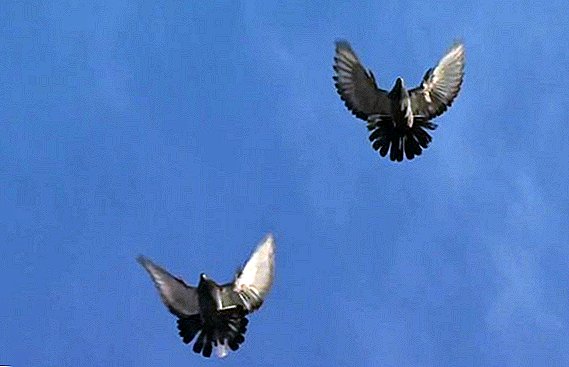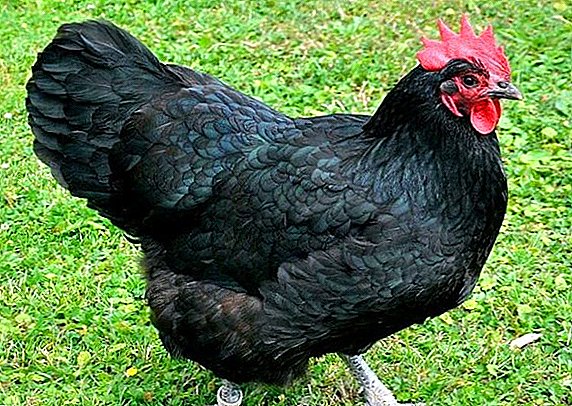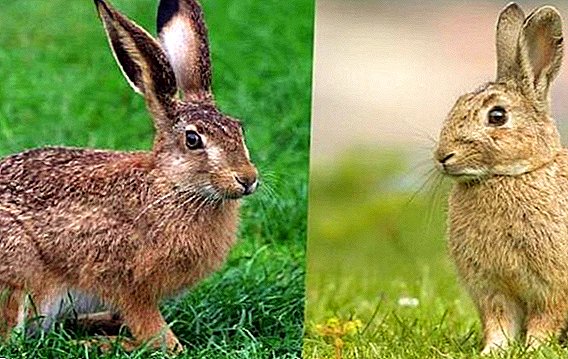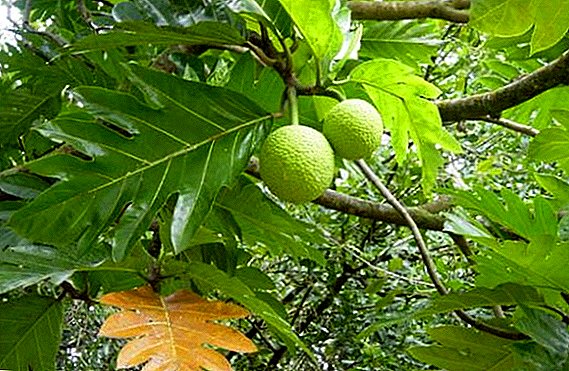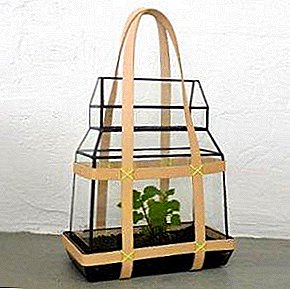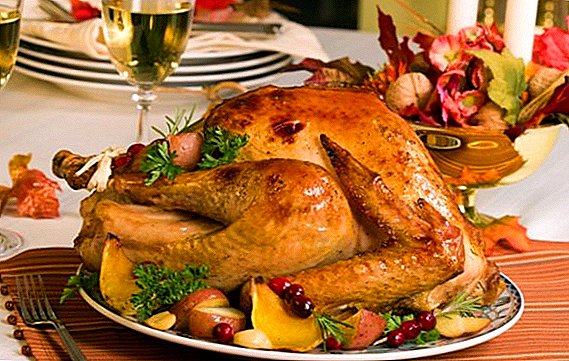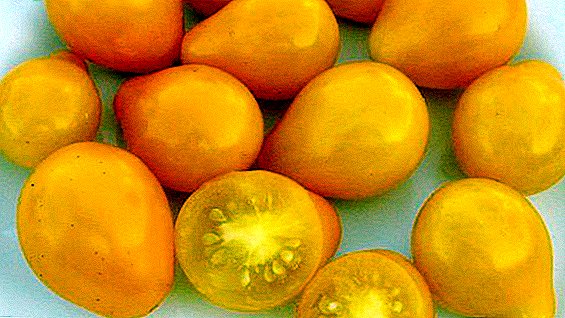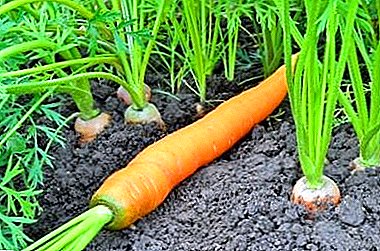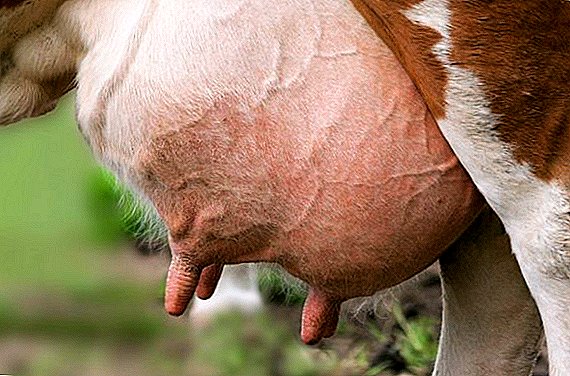 Uterine edema appears in every cow. Most often, a swollen organ returns to normal without any treatment. Such a process is normal and does not pose a threat to the health of the cow. However, in some cases, puffiness does not go away, which causes additional problems. Next, let's talk about the causes of the disease and symptoms, consider the treatment and prevention of udder swelling.
Uterine edema appears in every cow. Most often, a swollen organ returns to normal without any treatment. Such a process is normal and does not pose a threat to the health of the cow. However, in some cases, puffiness does not go away, which causes additional problems. Next, let's talk about the causes of the disease and symptoms, consider the treatment and prevention of udder swelling.
Causes of severe udder edema
In each case, puffiness provokes various causes, so it is necessary to find out which of them led to the appearance of the ailment in order to solve the problem comprehensively.
Find out how many days the cow bears a calf and how to keep the baby on the suction, what secretions a cow has before and after calving, and why she does not get up after calving.
There are a number of the following factors:
- The first calving.
- Serious kidney or heart disease.
- Low physical activity during gestation.
- Lack of exercise.
- Toxicosis.
- A high percentage of succulent or acidic feed in the diet.
- Udder injury.

Symptoms
Signs by which you can identify the ailment:
- Udder increase.
- Deformation of the body.
- Some of the rear or front nipples are shorter.
- The dough-like structure of the udder (with pressure, a dent remains, which does not disappear for a long time).
- The body is cold to the touch, the skin is pale.
- Milk obtained from a sick cow is watery.
Important! In severe cases, puffiness turns into mastitis.
What to do, how to remove the edema of a cow after calving
Consider the options for treatment and removal of udder swelling in various ways. Treatment should be started only after consulting a veterinarian so as not to confuse edema with more dangerous diseases. 
Power correction
As in the case of any other puffiness, the problem primarily arises due to an overabundance of moisture in the body. By itself, edema represents oversaturated tissues that increase in size. For this reason, nutritional correction is associated with a decrease in the diet of foods that contain a lot of moisture.
Juicy food is completely removed from the diet, even if it is associated with additional costs. Water is offered in limited quantities so that the cow does not develop dehydration. It is necessary to reduce the rate of concentrates to a minimum, as well as significantly reduce the daily rate of salt.
Salt, as you know, contributes to the accumulation of fluid in the body, but its complete absence can cause severe dehydration, so you can not completely abandon it. At the time of treatment, the cow is transferred to high-quality hay.
Read more about why cows are given salt.
It is important to understand that puffiness caused by trauma is not treated exclusively with diet. In this case, drug therapy is necessary, since the swelling of the organ is associated with tissue damage, and not with an excess of moisture in the body. 
Milk skimming and massage
One of the problems is a strong udder sagging, which requires the use of a special retention bandage. To prevent such a problem, it is necessary to decant the accumulated milk daily 6-8 times. That is, regularly release the body so that its weight does not increase.
Edema is also associated with poor blood circulation, so the cow must be massaged without fail. The procedure is carried out slowly and carefully, making circular movements from the bottom to the base. Do not use any ointments or creams, as they will cause a negative reaction.
It will be useful for you to read about what to do if a cow has a womb, and also if it does not have an afterbirth or has eaten it.
Medication
If puffiness does not subside for a long time, it means that it is necessary to apply medicines that help remove moisture from the body and improve the functioning of the heart. To reduce the interstitial pressure, as well as improve blood circulation, a 10% solution of calcium chloride is used, which is administered to the animal intravenously at a dose of 100-150 ml.
The substance also helps to cope with salt poisoning, removing excess from the body. The drug caffeine sodium benzoate is used as a diuretic. In fact, it is a natural caffeine with a preservative. A 20% solution in a dose of 10–20 ml is injected subcutaneously.  The tool increases pressure and accelerates blood circulation. Rygefen. Ointment for removing puffiness and inflammation, which can be used during udder massage. It can be used in complex therapy with the above medications.
The tool increases pressure and accelerates blood circulation. Rygefen. Ointment for removing puffiness and inflammation, which can be used during udder massage. It can be used in complex therapy with the above medications.
Did you know? The multi-chamber structure of the cow's stomach is due to the fact that in the wild, the animal does not have time to chop food. Therefore, they swallow food whole, and chew in a safe place while relaxing.
If the problem with excess fluid in the body of the cow is not solved, then once a day, give strong diuretic drugs:
- Glauber's salt (200 g);
- Karlovy Vary salt (20 g);
- castor oil (150 ml).
Compresses and decoctions of herbs
If the puffiness does not pose a threat to the life of the animal, and there are no serious symptoms, you can do with traditional medicines. The body can be wrapped with a cloth to warm it. Also used are poultices of hay rot or paraffin, which help speed recovery.  The following decoctions are used as popular diuretics, which do not harm the cow:
The following decoctions are used as popular diuretics, which do not harm the cow:
- on the basis of juniper berries (50-100 ml);
- birch buds (10-40 ml);
- horsetail (15-30 ml).
Drinking should be warm. If a cow refuses to take a decoction, then it is too bitter. It is necessary to take into account the concentration, and if necessary, dilute with warm boiled water.
Important! Do not use tinctures on alcohol, as well as diuretics, intended for people.
Prevention
As a preventive measures recommended:
- Daily exercise throughout the entire period of pregnancy.
- Normalized cow consumption of succulent fodder.
- Active walking
- Compliance with sanitary standards.
- Breeding aimed at the removal of individuals genetically predisposed to the edema of the organ.

Udder edema after childbirth occurs in almost every cow, but an overabundance of moisture in the body or poor blood circulation leads to a deterioration of the condition.
Did you know? In nature, cows feed their young with milk up to the age of three. This feature allows the use of cows for milk production on a regular basis.It is important to detect the problem in time, and then in the shortest time possible to save the animal from the illness. An already weakened after childbirth, the body can infect any infectious or viral disease.


